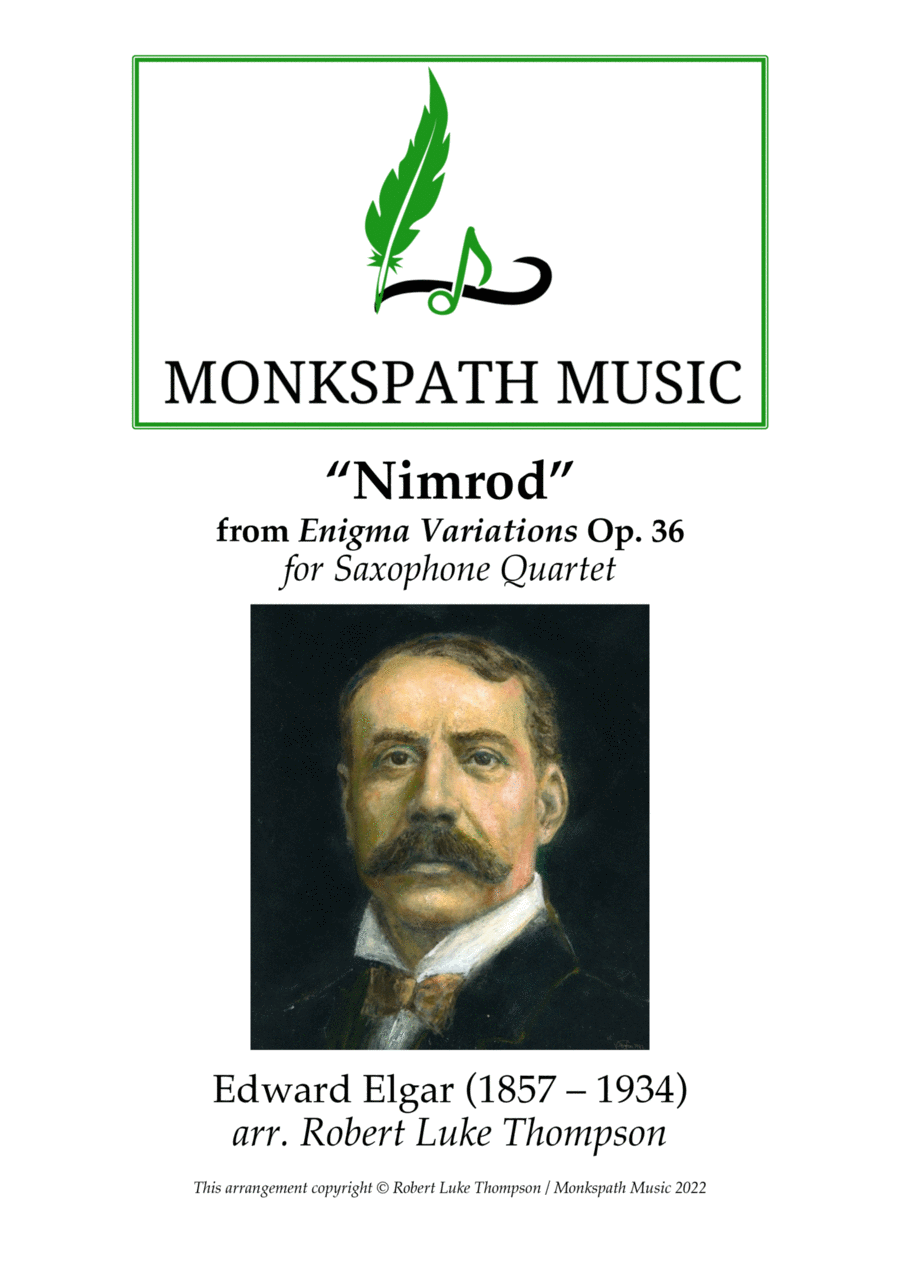Saxophone Quartet,Woodwind Ensemble Alto Saxophone,Baritone Saxophone,Soprano Saxophone,Tenor Saxophone - Level 3 - Digital Download SKU: A0.1124310 Composed by Edward Elgar. Arranged by Robert Luke Thompson. 19th Century,Chamber,Classical,Film/TV,Patriotic. 10 pages. Monkspath Music #725064. Published by Monkspath Music (A0.1124310). Sir Edward Elgarâs compositional output was prolific, with many well-known pieces, including the Pomp & Circumstance marches, Dream of Gerontius, and of course, the Engima Variations. Elgarâs legacy has been widely debated, but there is no doubt of his influence on âEnglishâ music and composers such as Ralph Vaughan Williams, but also further afield, on composers as diverse as Richard Strauss, Jean Sibelius, and Igor Stravinsky. Along with a central theme woven and varied throughout the work, each movement of Engima Variations is also a musical illustration, based on a family member or close friend of Elgar, and indeed Elgar himself. He dedicated the work âto my friends pictured withinâ. âNimrodâ is the name given to the ninth movement, based on Elgarâs editor and publisher, Augustus J, Jaeger. Musically, there is an obvious hint at the 2nd movement of Beethovenâs Piano Sonata Pathetique, but beyond this there are beautiful legato lines spread across the whole ensemble and a wide variety of timbral, dynamic, and tempo colourations. âNimrodâ has become a popular piece as a standalone item â often featuring in funerals, memorial services, and other solemn events such as Remembrance Sunday. Hans Zimmer also adapts the piece for use in the score for the 2017 film Dunkirk, and has become a standard tune to represent stoic âBritishnessâ. For further pieces, view the Monkspath Music catalogue and click here!
